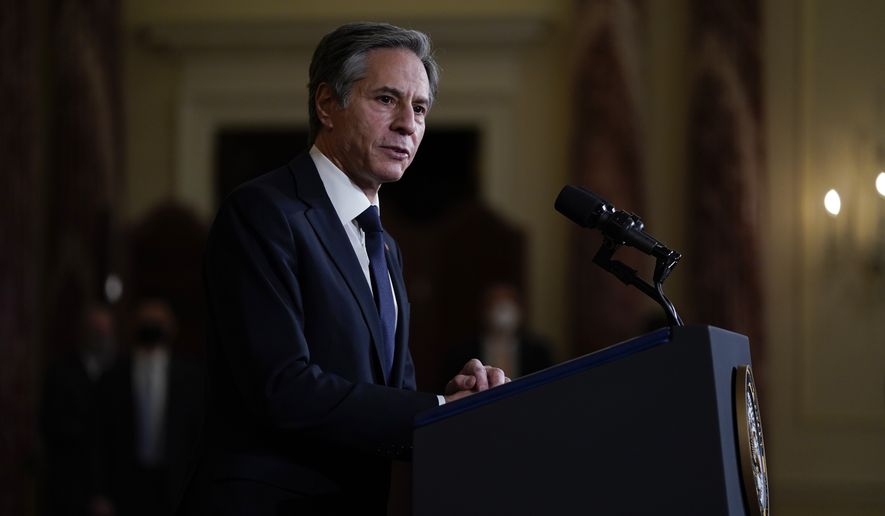Secretary of State Antony Blinken triggered a harsh reaction in China’s state-controlled media Thursday by holding a conference call with counterparts from Asia’s so-called “Quad” countries — India, Japan and Australia — to discuss joint strategy on a range of issues in the Indo-Pacific.
The call was the clearest sign to date the Biden administration is prepared to build on a Trump administration strategic push to link up with the region’s most powerful democracies to box in China, in a semi-formal alignment some are already dubbing an “Asian NATO.”
“China can retaliate economically if red line crossed,” a headline in the Chinese Communist Party-aligned Global Times warned ahead of the Quad virtual meeting, reflecting Beijing’s unease over the expanding diplomatic and military engagement of the Quad powers.
The Biden administration’s early efforts to build upon a Trump-era push to promote the Quad as the go-to economic and military alliance is likely to unnerve a China which hoped to a re-set from the often harsh exchanges with Washington under President Trump.
The group’s expanding momentum is all the more noteworthy given how the massive trade ties that China has with India, Japan and Australia.
U.S. officials are aware of such concerns. In the State Department summary of Mr. Blinken’s call Thursday with Australian Foreign Minister Marise Payne, Indian Minister of External Affairs Dr. S. Jaishankar, and Japanese Foreign Minister Toshimitsu Motegi, no mention was made of China.
However, the readout noted issues connected to China throughout, saying, for instance, that Mr. Blinken and his counterparts focused on “the urgent need to restore the democratically elected government in [Myanmar],” which borders China and serves as a potential land bridge between the Chinese mainland and the Indian Ocean.
China, which has oil and gas interests Myanmar, has so far refused to condemn the recent military takeover of the country that Washington has characterized as a coup, calling it an internal matter for Myanmar to settle.
Mr. Blinken and his Quad counterparts also talked about joint efforts for “countering disinformation,” and how the U.S., India, Japan and Australian can better work together on “counterterrorism [and] maritime security.”
Chinese analysts told the Global Times that Beijing should be wary of the Quad’s evolution. Ruan Zongze at the China Institute of International Studies, told the newspaper that Mr. Biden wants to use the Quad to advance U.S. regional interests and declare that “Captain America is back,” while potentially turning the grouping into an anti-China club.
The Quad concept has been around for more than a decade. It was first put forward as a strategic forum in 2007 by then-Japanese Prime Minister Shinzo Abe.
It gained steam during the final years of the Trump administration, as China’s military prowess and increasingly aggressive foreign policy moves spurred talk in Washington of the need for an Asian counterpart to NATO, to confront Beijing the way the Soviet Union was constrained in Europe during the Cold War.
By late last year, pushed by former Secretary of State Mike Pompeo, there was clear progress in building up the security identity of the Quad. U.S., Indian, Japanese and Australian naval units gathered twice in November in the Bay of Bengal for their largest-ever joint military drills, sparking fiercely critical Chinese commentary.
Sources have told The Washington Times that Mr. Biden pushed during a call with Indian Prime Minister Narendra Modi last week, for a first-of-its-kind meeting of the top leaders of the Quad countries to be held soon. It was not clear whether the idea was discussed on Thursday’s call between the four foreign ministers.
• Guy Taylor can be reached at gtaylor@washingtontimes.com.




Please read our comment policy before commenting.